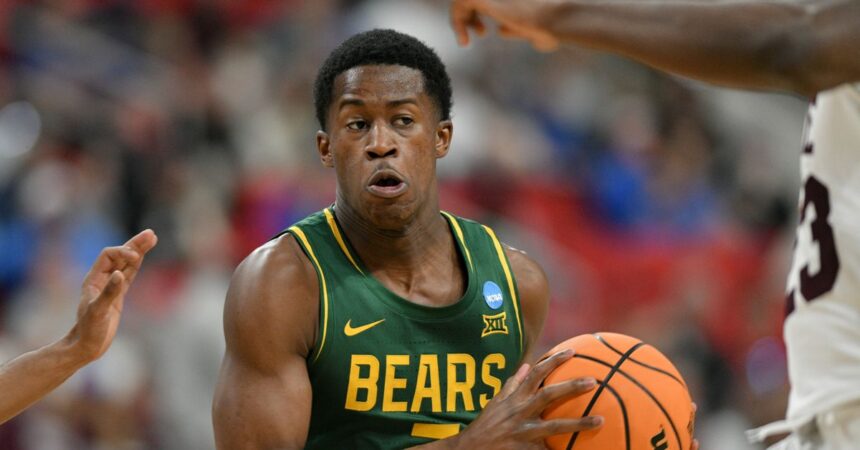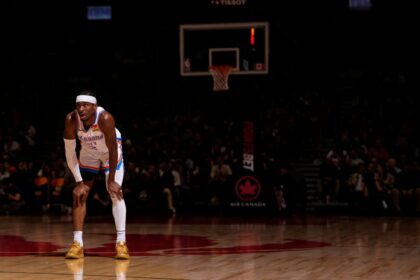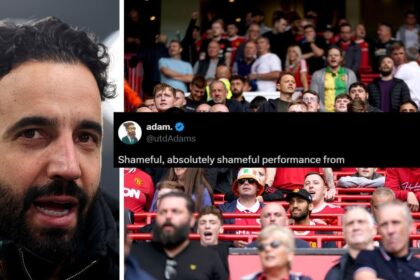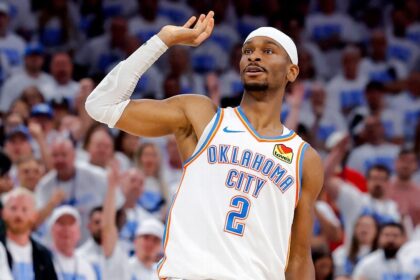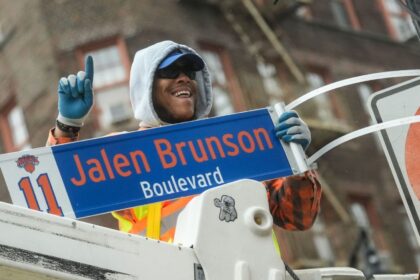The Philadelphia 76ers had more at stake than any team entering the 2025 NBA Draft lottery. Philly originally traded its 2025 first-round pick away to the Oklahoma City Thunder to clear Al Horford’s salary way back in 2020. Fortunately for them, the Sixers made the pick top-6 protected. When it became clear a purported season of contention was doomed by Joel Embiid’s injury and Paul George’s ineffectiveness, the Sixers tanked hard enough to be the fifth-worst team in the league. Still, Philly had a 36.1 percent chance of losing its pick if it fell below No. 6 overall.
Instead, the Sixers exited the lottery with the No. 3 overall pick, choosing only behind the Dallas Mavericks and San Antonio Spurs. It’s the ultimate consolation prize for a nightmare season, and a real opportunity to improve the team’s talent base going forward.
The Sixers are reportedly interested in shopping the pick, with Lauri Markkanen and Kevin Durant already rumored to be targets. The potential to get off George’s contract (which still has three years, $162 million remaining) either in a trade for a veteran star or in a trade back should have obvious appeal. Ultimately, the Sixers’ team-building direction will be based on how much the franchise believes in Joel Embiid’s ability to return to MVP form at 31 years old after a lost year.
We know Cooper Flagg is a lock to go No. 1 overall to the Mavs, and Dylan Harper is very likely to go No. 2 whether the Spurs keep or trade the pick. That means the draft really starts with the Sixers at No. 3. What should Philly do? Let’s rank their options.
Long shots and trade back options
8. Tre Johnson
Johnson could end up being drafted in the top-five, and deserves consideration from Philly at No. 3. He has a case as the best shooter in the draft, and his deep range and lightning quick release would be a natural fit playing off a healthy Embiid. I have some questions about how Johnson impacts the game outside of his shooting and scoring, and I don’t think he’s a perfect match on a Philly perimeter that already includes two smaller guards in Jared McCain and Tyrese Maxey. Johnson’s iffy defense, playmaking, rebounding, and shot-selection would give me too much pause to pull the trigger at No. 3 overall, but he’d be a good pick in a trade down if he’s somehow still on the board.
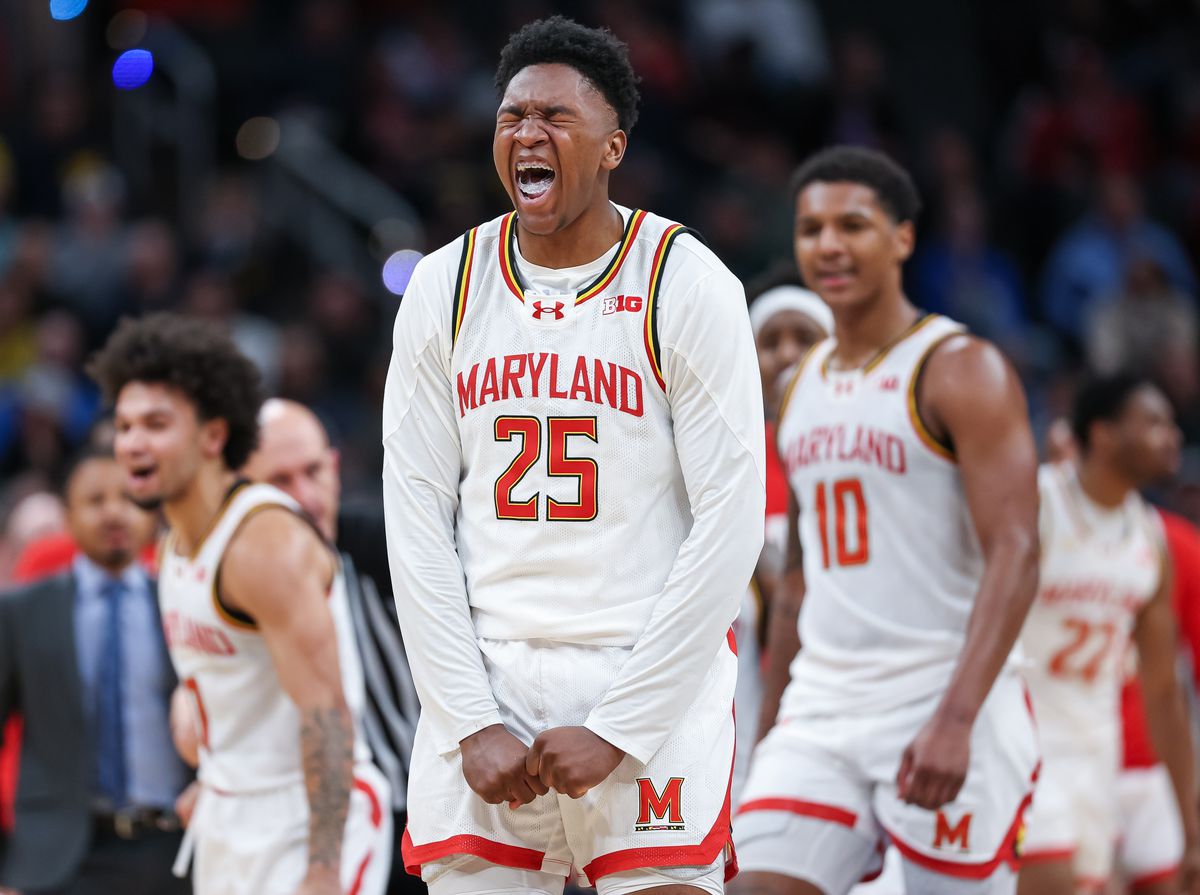
Photo by Michael Hickey/Getty Images
7. Derik Queen
Queen is one of the most fascinating upside plays in this class. The Maryland big man has special creation ability with the ball in his hands, where he can unleash a rare combination of strength, touch, and handling in tight spaces. Queen has big-time scoring potential and solid playmaking ability when an offense is built around his gifts, but how he transitions into being a role player is a major question mark. He’s undersized for a center and too slow to play the four, he can’t protect the rim or guard the perimeter, and he isn’t in great shape. Queen could be awesome offensively next to Maxey and McCain, and perhaps he could pair with Embiid for a punishing two-big front line while giving Philly some long-term insurance in the front court. Still, Queen feels a little too boom-or-bust to take with the No. 3 overall pick, and his downsides are concerning enough to focus on other options.
6. Noa Essengue
Essengue feels destined to be a late riser if he can continue his stellar season in the German league in the playoffs. The sales pitch here is easy enough: Essengue is super big, super athletic, and highly productive despite being the second youngest player in this draft class behind Cooper Flagg (by a matter of three days). His switchability defensively is a fascinating proposition for a player with such great positional size (he reportedly has a 9’3 standing reach), and his recovery ability when he does get beat is phenomenal. During a time when everyone wants dribble/pass/shoot prospects, Essengue remains unpolished in all three areas but still finds a way to impact the game offensively. There are real questions about how he how he fits into a halfcourt NBA offense right now, but his bundle of tools lets you dream on his ceiling. Ultimately, Essengue is a long-term play who doesn’t match Embiid’s timeline, but could be exactly what McCain and Maxey need next to them in the years to come.
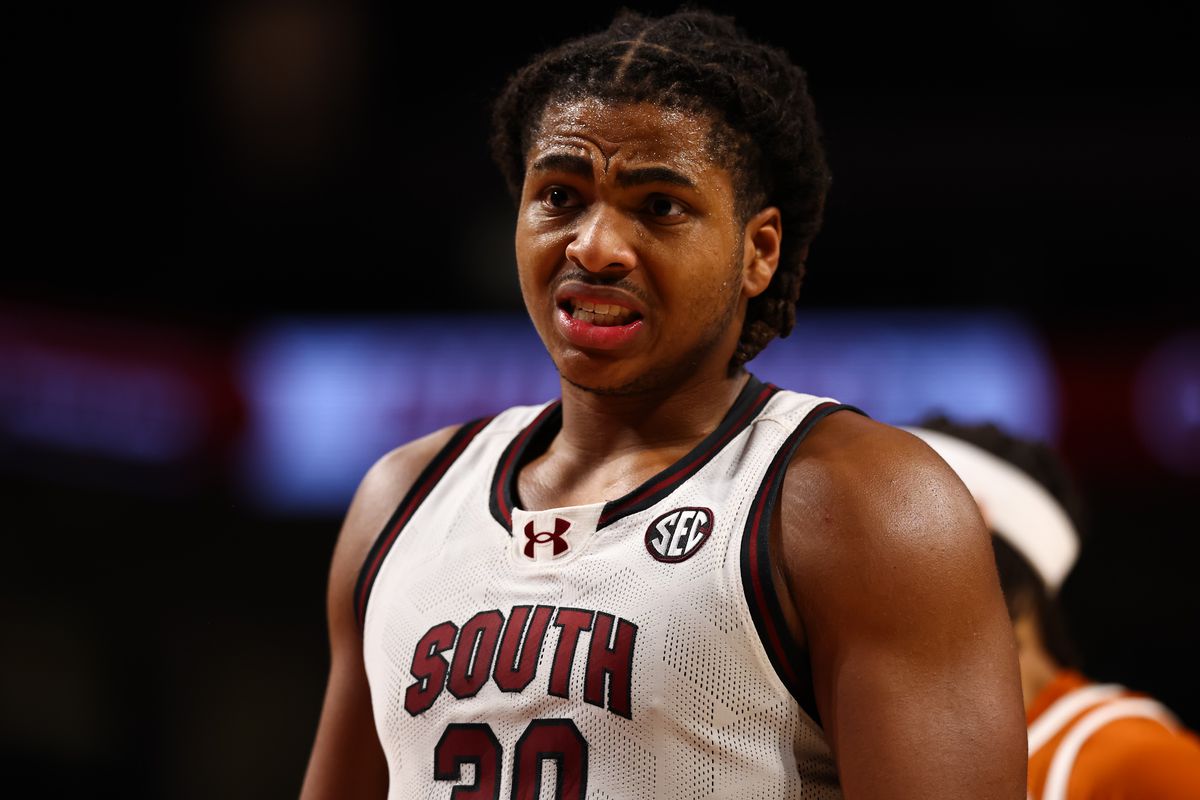
Photo by David Jensen/Getty Images
5. Collin Murray-Boyles
Right now, the Sixers’ younger half of the timeline has a lot of defensive question marks. Murray-Boyles would answer those instantly as perhaps the best overall defensive prospect in the class. The South Carolina forward has pristine instincts as a roaming help defender who can jar the ball loose from offensive players, while still being strong and long enough to hold up inside. The dream of CMB turning into Draymond Green on the defensive end, and Julius Randle offensively sure sounds appealing, but reaching those heights will be no easy task. The big issue for Murray-Boyles right now is that he’s not a reliable shooter, and because of that, it’s hard to see how he fits any future with Embiid. Maxey and McCain could thrive with CMB’s backline defense and short-roll playmaking, but No. 3 feels a little rich given the Embiid factor and his shooting questions.
4. Ace Bailey
The Sixers feel like one of the best potential fits for Bailey to me if you’re counting on Embiid to return. The Rutgers freshman has an elite combination of length, explosiveness, and shot-making on the wing that fits around Philly’s existing core of Embiid, George, Maxey, and McCain. A team like the Sixers might be the best hope for getting Bailey to play within structure, where he can focus on spacing the floor and leveraging his tools defensively rather than going off script offensively. It sounds nice in theory, but it just feels like a bit too much of a gamble at No. 3 overall. Bailey is used to offenses being around his shot-making, and it’s hard to imagine he’ll be happy with staying in a smaller lane so early in his career. He’s prone to mental lapses defensively, and just isn’t someone you can trust to make the right decision with the ball in his hands. Bailey would be worth the risk if the Sixers stayed at No. 6 in the lottery (if he was still on the board), and perhaps he could be a target in a small trade down. He just feels a little too immature at this stage to really capitalize on threading the needle of Philly’s two timelines.
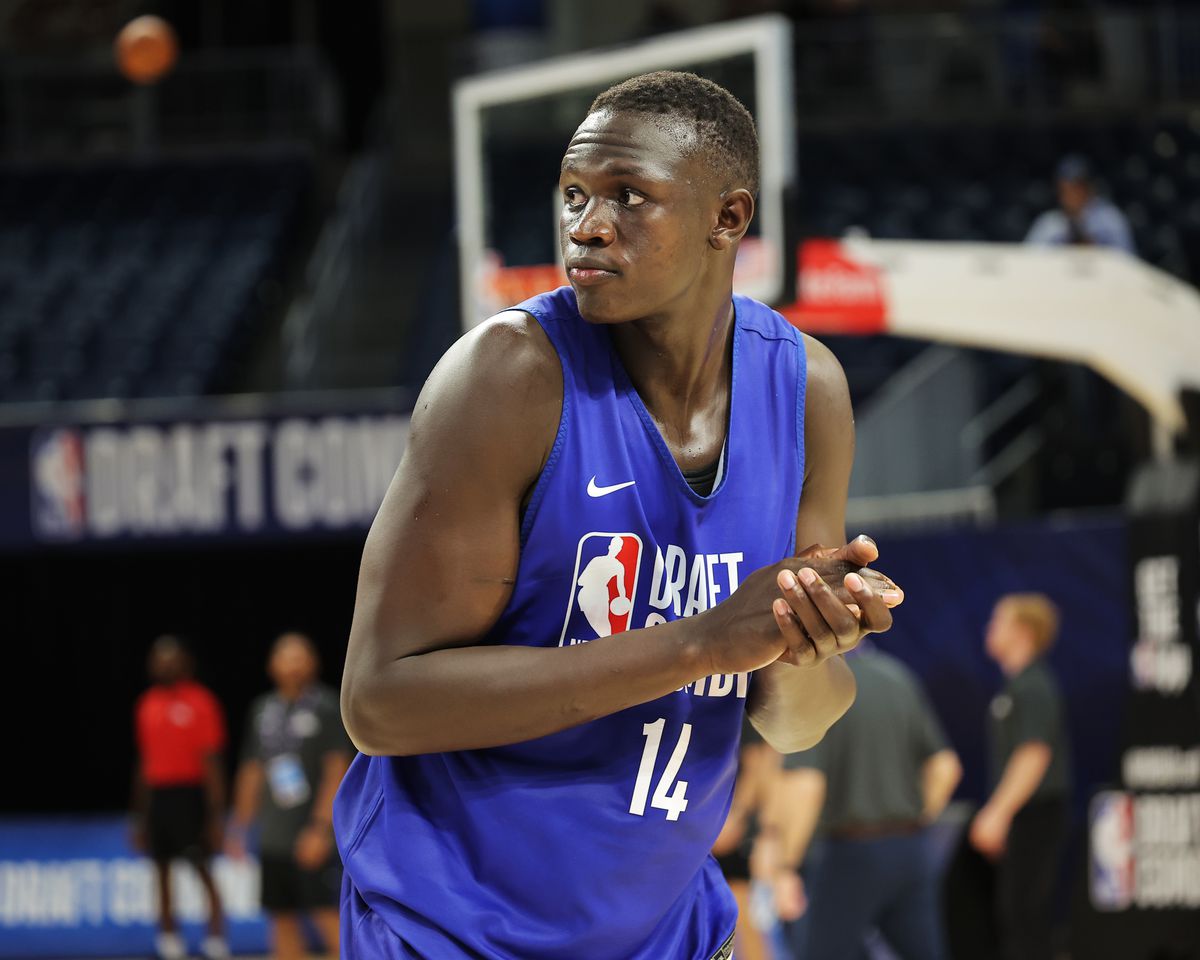
Photo by Melissa Tamez/NBAE via Getty Images
3. Khaman Maluach
I’m buying into Maluach enough to put him No. 3 overall on my personal board, so this is a case of taking the best available talent in my eyes. Your milage may vary on that. Maluach is a gigantic center at 7’2, 250+ pounds with a 7’6 wingspan. He was a super efficient finisher in a narrow role at Duke, and there’s reason to believe he has more to his game than that. For Maluach to hit his potential, he has to be a reliable floor spacer from three, and that’s a part of his game he showed off more in his pre-Duke tape and during his workouts. The shooting would have to come around quickly for a potential pairing with Embiid to work, and that might be wishful thinking. Instead, Maluach could be the Sixers’ center of the future if Embiid can’t return to his MVP form. Ultimately, this is probably too risky for Philly. There are major questions about Maluach’s hands and playmaking, and his shooting upside at this point is mostly theoretical. His size will be a factor defensively, but he’s a little slow getting off the ground and doesn’t have the sharpest instincts yet. Even as a big fan of Maluach’s ceiling, it still feels like there are better options for Philly.
2. VJ Edgecombe
Edgecombe should get serious consideration as the No. 3 pick, and could even be the front-runner. The Baylor wing measured a little bigger than expected at 6’4 barefoot with a 6’7.5 wingspan, and that could give Philly some faith he could slide in with Maxey and McCain on the wing. Edgecombe is the most explosive athlete in the draft with a wild combination of speed and leaping at his disposal. He can wreck havoc as a help defender, and should get better on the ball with more tutelage. He’s a dependable floor spacer on the wing who can knock down shots, and he’s a plus rebounder for his position. What Edgecombe does with the ball in his hands remains a bit of an adventure, as he still needs a lot more polish with his pull-up jumper and rim finishing. I can see a high-floor and high-ceiling case for Edgecombe given his tools, and that makes him a worthy selection at No. 3.
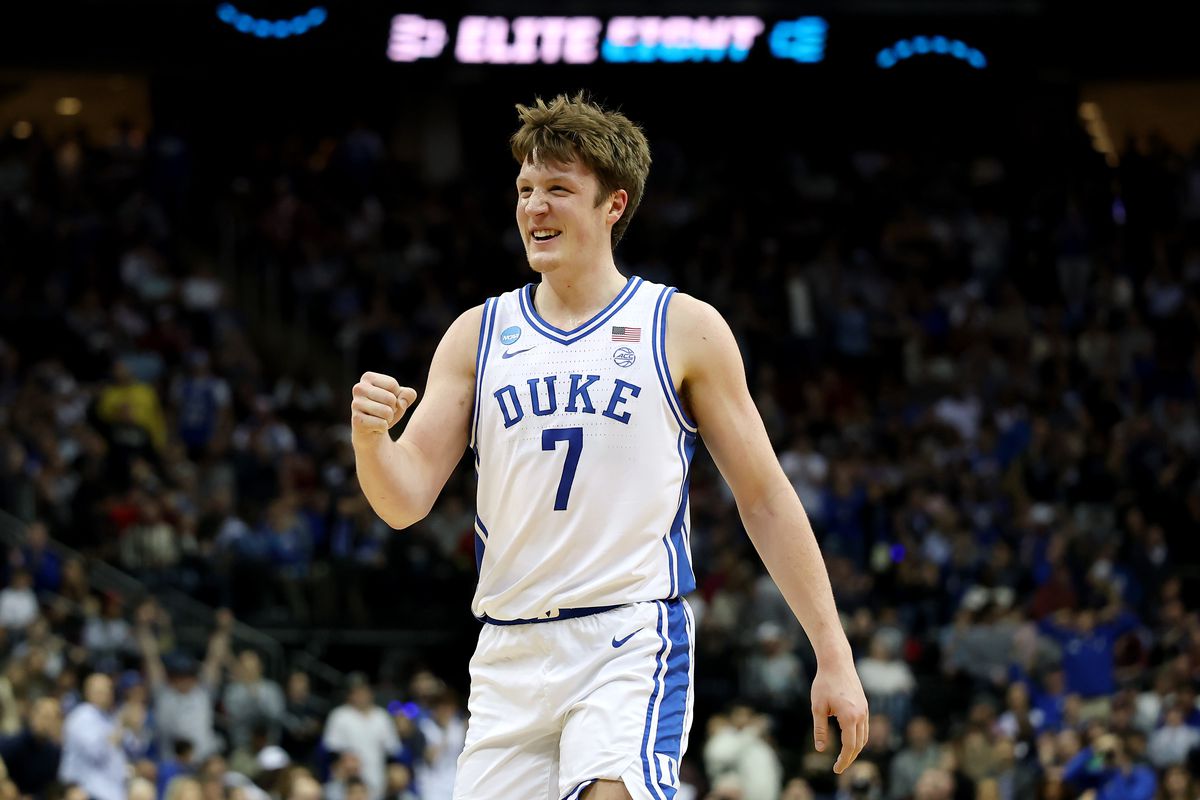
Photo by Elsa/Getty Images
1. Kon Knueppel
Knueppel is more than just arguably the best shooter in this draft class. The Duke freshman filled in all the cracks between Cooper Flagg and Khaman Maluach this season with his elite movement shooting, ability to run secondary pick-and-roll, and his penchant for making high-IQ plays on both ends. Knueppel has limited length and explosiveness for an NBA wing after measuring at 6’5 barefoot, 219 pounds, with a 6’6 wingspan. Would Philly’s perimeter be too small with him starting at the three next to two smaller guards in Maxey and McCain? There would certainly be defensive questions for that group, but the offensive firepower would be immense. Knueppel is a sniper from all over the court, and he has more skill with the ball in his hands than most players in his archetype. He formed a wonderful connection with Maluach in the two-man game at Duke, and he could be counted on to make the connective passes Philly would need to keep the offense humming. Philly’s spacing and ability to attack closeouts would be devastating long-term with McCain and Knueppel, and I think he’s smart enough and tough enough to overcome his lack of tools on the defensive end. Knueppel feels like the best bet to connect the Sixers’ two-timelines if Embiid can return to dominance, and that makes him my favorite pick for Philly at No. 3 overall.





